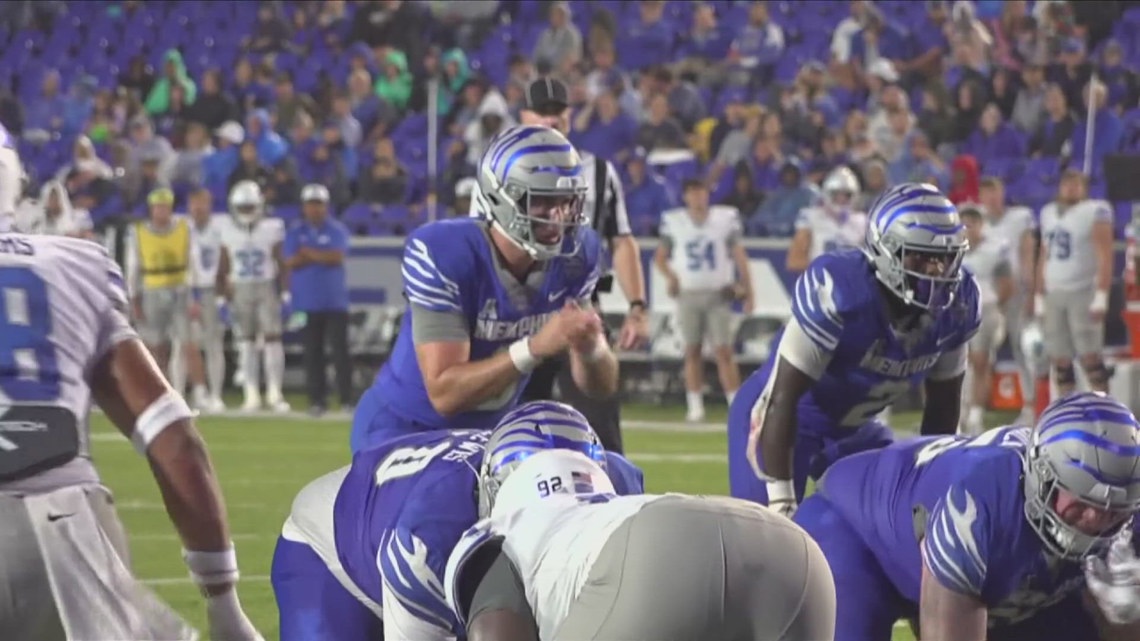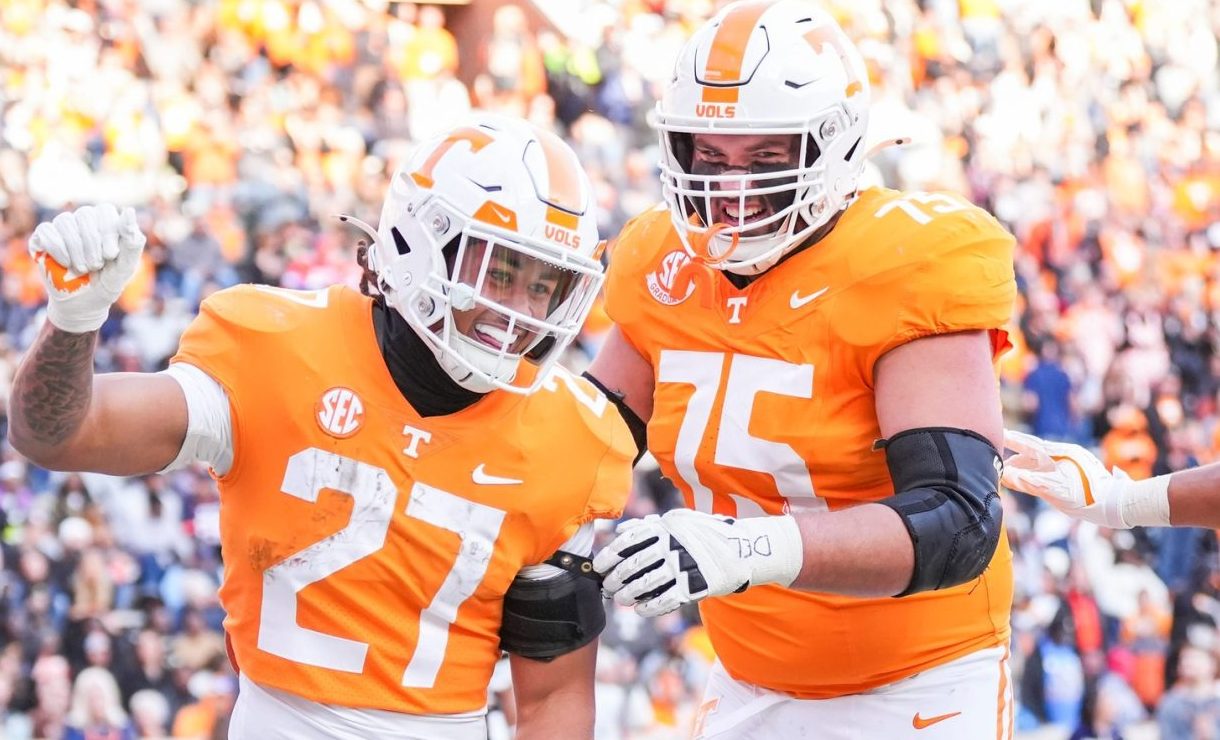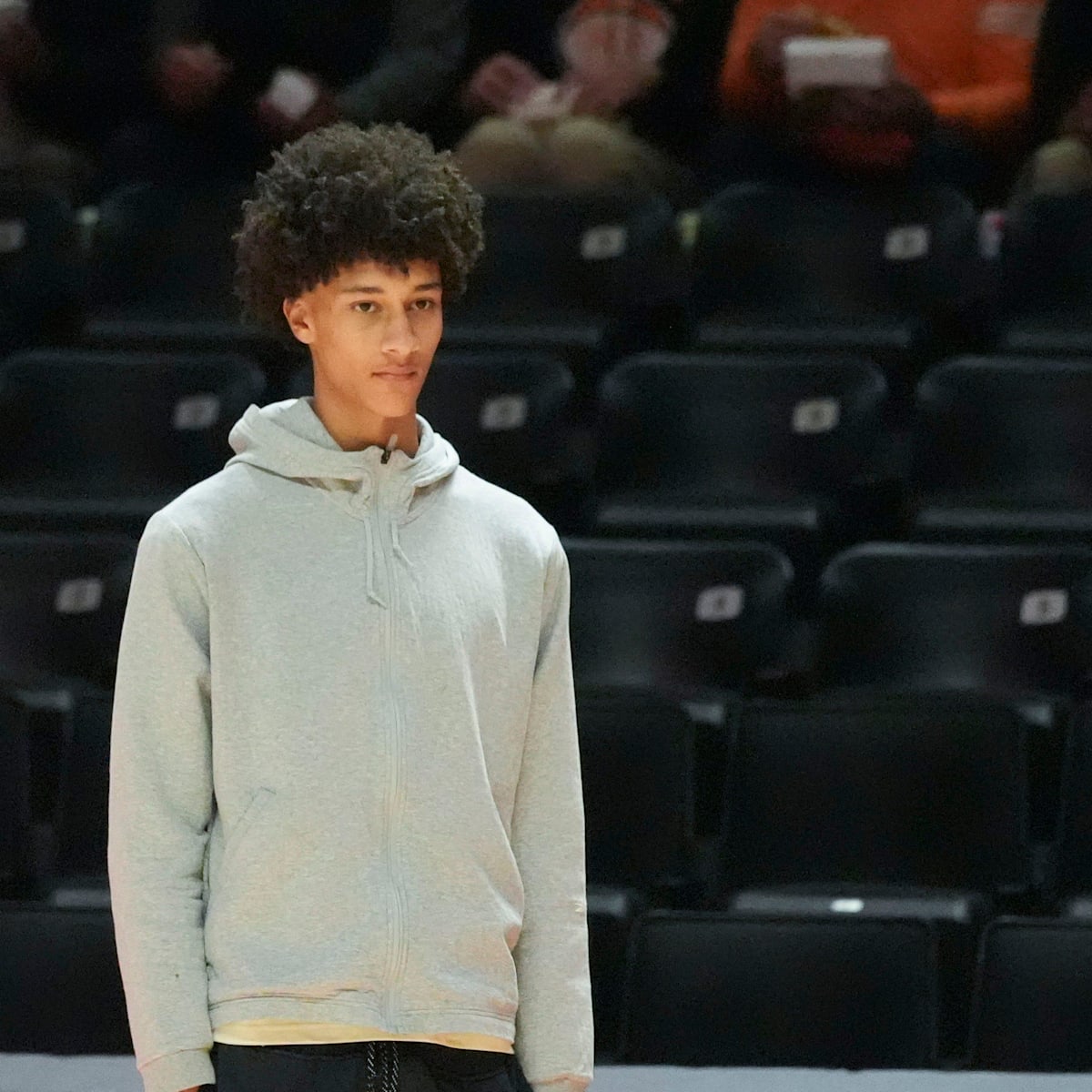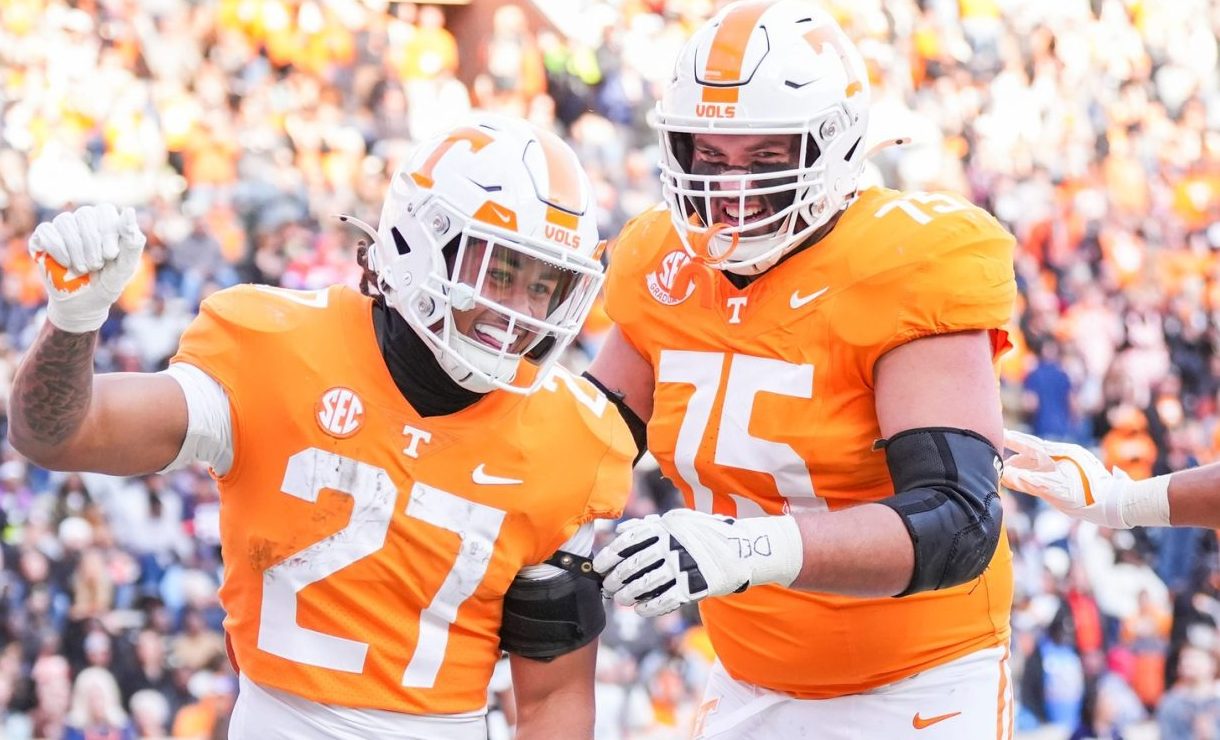NIL
What went wrong for Cougars in 2025? Inability to close didn't help
When the BYU men’s volleyball season ended in a fifth-set defeat to Stanford last month in the MPSF tournament, it struck a nerve — a nagging nerve that plagued the Cougars on multiple occasions in big moments throughout the season. “Unfortunately, throughout the course of the year, we struggled to finish,” BYU coach Shawn Olmstead […]


When the BYU men’s volleyball season ended in a fifth-set defeat to Stanford last month in the MPSF tournament, it struck a nerve — a nagging nerve that plagued the Cougars on multiple occasions in big moments throughout the season.
“Unfortunately, throughout the course of the year, we struggled to finish,” BYU coach Shawn Olmstead said. “We got ourselves in positions where we had every opportunity to (win).”
After getting to those positions, the school faltered on a few too many occasions — Stanford proving to be the last straw.

Special Collector’s Issue: “1984: The Year BYU was Second to None”
Get an inclusive look inside BYU Football’s 1984 National Championship season.
In their final match of the year, the Cougars led late in the first set before watching the Cardinal roar past them, scoring nine of the final 12 points to beat a bewildered BYU 25-23.
“Every year we’re trying to figure out how we can get a little bit better attacking out at the pins; how we can get better from the service line,” Olmstead said. “Those are the keys to this game, to our level.”
— BYU coach Shawn Olmstead
Stanford then cobbled together a similar ending in the final moments of the third set, using an 8-2 run that snatched a victory from the Cougars — who had three set-point opportunities — for a 27-25 triumph. The Cardinal sealed the match in a fifth-set victory that they never trailed.
“We had many opportunities to just capitalize and put away a set, and we didn’t,” Olmstead said of the match against Stanford. “We couldn’t put together the things (we needed to) down the stretch.”
BYU had similar opportunities slip through its fingertips in matches throughout the season — against No. 5 UC Irvine, No. 3 Hawaii, No. 6 USC and No. 2 UCLA.
“That kind of kept biting us in the butt,” Olmstead said. “We couldn’t overcome that. (Things) didn’t go the way we anticipated.”
Despite the Cougars’ nagging inconsistencies in some of their biggest moments of the year, they still finished with a No. 8 national ranking and 11 victories over teams that were listed in the final AVCA poll. The school’s greatest feat proved to be a pair of wins against MPSF tournament champion and No. 4 Pepperdine to close out the regular season.
“You try to learn from the great moments and you learn from the tough moments,” Olmstead said. “I thought we should have accomplished a little bit more down the stretch. And I think the guys feel that too and so that’s hard because a lot of those guys aren’t going to be with us next year. We’re going to be kind of a brand-new team.”
With the departure of five seniors, new NCAA roster regulations, and transfers, BYU could see more player turnover than normal this offseason.
“We knew that with the changing landscape of the NCAA and what is on the horizon … that the transfer portal was going to look … different than it has in years past,” Olmstead said. “We were right into the transfer portal immediately.”
The transfer portal has already yielded results for Olmstead and his staff as they retool the roster for 2026. Olmstead says next season the school will have more transfer players than it ever has had.
“I’m not allowed to comment on them specifically, because they’re going through the normal admissions that any athlete does in the transfer portal,” Olmstead said. “All of them are … guys that have played a lot in their respective programs, quite a bit actually. One of them is an All-American at (his) former school.”
BYU could look a lot different come next season, but it all is motivated by its desire to improve.
“Every year we’re trying to figure out how we can get a little bit better attacking out at the pins; how we can get better from the service line,” Olmstead said. “Those are the keys to this game, to our level.”
The Cougars won’t be able to get back together for official practices until school resumes next fall; however, Olmstead and his staff are staying busy doing all they can to address their team’s needs over the summer. They don’t want another season to end, feeling their team didn’t maximize its potential.
NIL
West Virginia approves NIL for high school athletes
High school and middle school student-athletes in West Virginia are now able to take advantage of their name, image and likeness or NIL. The West Virginia Secondary School Activities Commission (WVSSAC), with approval from the state Board of Education, finalized the policy in July, and it officially took effect last Friday. The approval means that […]



High school and middle school student-athletes in West Virginia are now able to take advantage of their name, image and likeness or NIL.
The West Virginia Secondary School Activities Commission (WVSSAC), with approval from the state Board of Education, finalized the policy in July, and it officially took effect last Friday. The approval means that West Virginia is the 44th state to adopt a NIL policy.
Under the policy, student-athletes in grades 6-12 can earn financial compensation through endorsements, social media promotions and other activities to leverage their personal brand. This change allows young athletes to capitalize on their talents and public recognition without jeopardizing their amateur status or eligibility to compete in WVSSAC-sanctioned sports.
NIL
South Carolina women’s basketball players sign NDA’s about compensation from revenue sharing – Deseret News
If you thought the revenue sharing era of college athletics — brought on by the approval of the House settlement — would differ from the NIL era that preceded it in terms of transparency regarding player compensation, you will be probably be disappointed. Thus far, all indications are that schools will be anything but transparent […]

If you thought the revenue sharing era of college athletics — brought on by the approval of the House settlement — would differ from the NIL era that preceded it in terms of transparency regarding player compensation, you will be probably be disappointed.
Thus far, all indications are that schools will be anything but transparent with the public in regards to what players are receiving on an individual basis through revenue sharing.
In July, CBS Sports filed “more than a dozen freedom of information requests for the revenue-sharing contracts of high-profile college football players across the country” but just six schools responded to those requests, all denying them for various reasons. The same thing happened to the The Post and Courier, which requested records from Clemson.

Special Collector’s Issue: “1984: The Year BYU was Second to None”
Get an inclusive look inside BYU Football’s 1984 National Championship season.
Although many different reasons were cited for those denials, FERPA (the federal Family Education Rights and Privacy Act) was frequently used.
Ultimately, CBS Sports’ Richard Johnson, John Talty and Brandon Marcello concluded that “for now, as payments to athletes increase, so will the secrecy around what they’re being paid.”
That secrecy, at least at a prominent SEC school, has now expanded to some of the student-athletes themselves. Lulu Kresin of the Greenville News, a paper based in South Carolina, reported Wednesday that South Carolina’s women’s basketball players have been required to sign non-disclosure agreements regarding the compensation they receive from revenue sharing, the point being to not share their compensation from the school with anyone, even with their own teammates.
In a podcast appearance with former First Lady Michelle Obama, head coach Dawn Staley said, “now whether they can stick with that or not, some of them get disgruntled and maybe transfer and just say what ‘I was making (amount)’ and it can stir up the pot, but I’m very honest,” Staley said. “I’ll tell them, there’s a reason why you get paid this and you get paid that. I’ll explain that to them.”
Staley noted that she is a fan of the recent and many changes in college athletics that have led to player’s being compensation, but still wants college athletes to be amateurs.
“I’m supportive of it, I really am,” Staley said. “I think it’s long overdue. … We got to find a way to balance, to keep it an amateur sport while allowing young people to go out there and benefit from their name, image and likeness.”
It does appear, though, if South Carolina’s approach is any indication, that transparency regarding player compensation is becoming more and more limited in the revenue sharing era.
NIL
New college sports model can’t dodge Title IX implications: ‘It’s head-on’ | Basketball
RALEIGH, N.C. — With all the talk about revenue-sharing in college sports, front-loaded NIL packages, multi-million-dollar quarterbacks and looming Congressional involvement, all but overlooked has been the elephant in the room: Title IX. The long-awaited House vs. NCAA settlement was to bring some parameters and guardrails to what often has been chaotic since 2021. A […]

RALEIGH, N.C. — With all the talk about revenue-sharing in college sports, front-loaded NIL packages, multi-million-dollar quarterbacks and looming Congressional involvement, all but overlooked has been the elephant in the room: Title IX.
The long-awaited House vs. NCAA settlement was to bring some parameters and guardrails to what often has been chaotic since 2021. A part of the settlement was that $2.8 billion be paid by the NCAA over the next 10 years to former athletes denied the chance to benefit financially from their name, image and likeness while playing in college.
But the $2.8 billion in back pay has been paused. The reason: Eight female athletes, including six from the College of Charleston, appealed that part of the settlement approved in a California court, saying it violates Title IX. That could just be the start, said Nora Lynn Finch, a former women’s coach and longtime athletic administrator at N.C. State and then the ACC.
“There is going to be a bombardment of Title IX complaints,” Finch said in an interview. “They’ll be coming from the athletes, they’ll be coming from coaches. And never rule out the women’s sports foundations. “From the time the House settlement was proposed and supported by the NCAA membership, right away women were saying, ‘You cannot get past Title IX.’ The House settlement puts us on a collision course.
“There’s no left or right turn now. It’s head-on.”
‘Interesting to watch’
Finch has a lengthy background in women’s sports and the fight for equity. She was an assistant women’s basketball coach under the late Kay Yow at N.C. State, then was NCSU’s chief women’s sports administrator as associate athletic director.
At the ACC, Finch served as senior associate commissioner/women’s basketball. She also chaired the NCAA Division I women’s basketball committee for eight years and negotiated the first national women’s basketball TV contract with CBS.
The appeal by the eight athletes was based on the claim that NCAA female athletes who played from 2016 to 2021 and are eligible for back damages would not be paid the same as football and men’s basketball players.
One of their attorneys said former female athletes should receive $1.1 billion of the back pay to prevent “irreparable harm” to women’s sports.
“This is a football and basketball damages settlement with no real benefit to female athletes,” attorney Ashlyn Hare said in a statement to the Associated Press. “Congress has expressly rejected efforts to exempt revenue-sharing sports from football and basketball from Title IX’s anti-discrimination mandate.”
A court decision on the athletes’ appeal could take months. It did not delay NCAA schools from cranking up revenue-sharing to their athletes — most of it to football and men’s basketball players — on July 1 as schools worked under the $20.5 million “salary cap” approved for this academic year.
Several schools are devoting about 75% or more of the revenue share from their athletic department funds to their football programs. Men’s basketball receives about 15%, women’s basketball 5% and all other sports 5%.
Can that kind of revenue breakdown pass muster without Title IX challenges?
“It’s going to be interesting to watch,” Finch said. “There’s going to be some heated discussions on the women’s side on this. I do believe Title IX is going to withstand this test, and it will be a test. I think it will stand. Boy, would that be some kind of mutiny if Title IX itself were to be diluted.
“How it’s going to be determined obviously is the question. What parts of the money itself does Title IX govern?”
That’s a question athletic directors must consider in planning, N.C. State’s Boo Corrigan said.
“It’s always there. It’s always in the front of your mind as far as what you’re going to do,” the Wolfpack AD said. “We’ve spent a lot of time since we’ve been here in leveling off all of our budgets.
“The tricky part is that right now universities are changing. There’s more and more women going to college than there are men. It’s making sure you’re keeping up with that in participation numbers and where are you. What we really look at is what are the experiences they’re having and are we on-point with what they’re doing.”
How does Title IX apply?
Title IX, a federal law since 1972, provides that “no person in the United States shall, on the basis of sex, be excluded from participation in, be denied the benefits of, or be subjected to discrimination under any education program or activity receiving Federal financial assistance.”
That covers a lot of bases and “denied the benefits” could be the part of Title IX that launches more legal action over revenue-sharing and money paid by third-part NIL collectives.
California judge Claudia Wilken, who ruled on the House settlement and took her time doing it, did not address Title IX ramifications in revenue sharing with athletes, saying the lawsuit was an antitrust case. She did rule the back damage payments were not subject to Title IX requirements — a decision that then was appealed to the Ninth Circuit Court of Appeals.
“She made it clear right from the beginning she wasn’t factoring in Title IX in her deliberations, (ruling) that’s a decision y’all (NCAA schools) have to deal with,” Finch said.
Presidential politics
In the final days of the Biden Administration, the Department of Education provided some guidance, saying paying athletes would fall under “athletic financial assistance” and would need to be split proportionately at schools.
In February 2025, the Office of Civil Rights issued a statement concerning Title IX implications for college revenue sharing. It said, in part: “Title IX says nothing about how revenue-generating athletics programs should allocate compensation among student athletes. The claim that Title IX forces schools and colleges to distribute student-athlete revenues proportionately based on gender equity considerations is sweeping and would require clear legal authority to support it. That does not exist.”
President Trump has since signed a “Save College Sports” executive order that prohibits pay-for-play payments from third parties to athletes. The executive order also calls for the “preservation and, where possible, expansion of opportunities for scholarships and collegiate athletic competition in women’s and non-revenue sports.”
Trump signed another executive order July 31 that expanded his council on sports that will be chaired by golfer Bryson DeChambeau. Trump said he wanted to clean up the “mess” in college football but also said he was concerned about women’s sports being “totally decimated” with much of the new revenue going to football programs.
“Very bad for women, very bad what’s happening,” Trump said. “Because now there are no women able to get the money they’re talking about. It seems to be going mostly to football, some basketball.”
Immediate implications
At Stephen F. Austin State University in Texas, six women’s athletes filed a class action lawsuit based on Title IX discrimination, seeking to keep the school from eliminating women’s bowling, beach volleyball and golf. The school, in announcing the cutbacks in May, had cited the “anticipated impact” of revenue sharing in Division I.
A U.S. District Judge ruled in favor of the athletes, ordering the school to reinstate the women’s sports teams.
ACC commissioner Jim Phillips said at the league’s football kickoff event in Charlotte that Title IX concerns — and potential lawsuits — are an issue that can’t and won’t be overlooked.
“You have to be paying attention to that,” Phillips said. “We talk about it often with our athletic directors and senior women’s administrators and university officials. At the end of the day these end up being local decisions, meaning they’re campus-driven, and ultimately it’s what the campus wants to do.
“But we’re trying to educate our constituents, trying to make sure that they have the information necessary to make good decisions and judgment about what they’re going to do. And I’ve been pleased with what I’ve heard,” he said. “Now, I don’t know what everybody’s doing, because it’s happening so fast, but this league has been so committed for 73 years to broad-based programming like no other, with 15 women’s sports and 13 male sports, that I’m sure people are looking to the ACC to see how we’re handling it. I’ve talked to the other commissioners about it. So there’s been lots of conversation, but you just don’t know until you get into it.”
Early NIL gains
It’s not that women playing college sports have been denied NIL-related benefits. ESPN reported Texas Tech softball pitcher NiJaree Canady was given a $1 million contract by the school’s collective, The Matador Club, last year after she transferred from Stanford.
Several female athletes are combining strong athletic performance and strong social-media brands to earn big bucks.
Livvy Dunne, a gymnast at LSU, had an NIL valuation of more than $4 million last year driven by her social-media presence and influence, according to On3 rankings.
Former N.C. State sensation Katelyn Tuohy, who starred for the Pack in cross country and track, was the first college female athlete to sign an NIL deal with a major shoe company when she agreed on a contract with Adidas in 2023. Emily Cole, a former track and field star at Duke, was a bit of an NIL forerunner. She leveraged her large social media following into NIL deals with H&R Block, Family Dollar and others in 2022.
Cole, in a 2022 News & Observer interview, said she hoped her NIL success would “change the path for a bunch of future female athletes to come and have more opportunities whenever they compete than I did.”
Finch, who retired from the ACC in 2019, said there was “no way to predict what our government will do next” or how the courts would interpret the law or rule on the appeal on back damages.
“My hope is that Title IX is a driving factor in institutions’ decisions to pay whatever, through collectives or university booster clubs, to ensure women are appropriately allowed access (to revenue),” Finch said. “What I’m concerned about is there have been so many road blocks to the advancement of women in sports over time.
“Title IX still has a place. … We’re on a real upswing right now in women’s sports. Please don’t try to knock it down.”
©2025 Raleigh News & Observer. Visit newsobserver.com. Distributed by Tribune Content Agency, LLC.
NIL
Tennessee’s Adidas Deal Is Another Product of NIL Era
Tennessee’s Adidas Deal Is Another Product of NIL Era Privacy Manager Link 1

NIL
Tennessee's Adidas Deal Is Another Product of NIL Era
Tennessee’s Adidas Deal Is Another Product of NIL Era Loading stock data… Privacy Manager 0



- Loading stock data…
NIL
Bill Belichick highlights importance of building UNC roster with money
Football rosters are no longer solely built through recruiting. Ten years ago, college football programs only had to worry about building their roster through high school recruiting and – when compared with 2025 – a much-less active transfer portal. Now, college football programs have to worry about landing players with NIL money. Just look at […]

Football rosters are no longer solely built through recruiting.
Ten years ago, college football programs only had to worry about building their roster through high school recruiting and – when compared with 2025 – a much-less active transfer portal.
Now, college football programs have to worry about landing players with NIL money. Just look at UNC’s pursuit of a starting quarterback for this fall, as Gio Lopez signed a $4 million deal to come over from South Alabama.
North Carolina also landed its entire, projected starting defensive line through the transfer portal, plus its likely starting center in Christo Kelly.
During media availability before practice on Wednesday, Bill Belichick spoke about building the Tar Heels with money now in the picture.
“Right now, we’re kind of in between the revenue, what it’s going to be next year is a little bit different than what it is now,” Belichick said. “We’re going to have a recruiting class come in that’s going to affect it more than with last year’s recruiting class, because we didn’t really have much of one. So I think the economics are going to change significantly from ‘25 to ‘26. Let’s just say, generally speaking, we want to try to get good players. I wouldn’t want to lose a good player over a few $1,000 because, say we’re over our budget. If he’s that good of a player, we give them a little bit of the extra money to get them and figure it out somewhere else.” So it’s a very fluid situation, but to Mike’s point, I definitely agree. Mike and I are on the same page. Offensive and defensive lines are important, you’ve got to have that.”
UNC made a significant investment into its football program last year, hiring Belichick to be its next head coach, which in turn increased UNC’s NIL budget. North Carolina’s hope is it’ll be able to land higher-quality players as a result, which we’ll get a first taste of this fall.
Follow us @TarHeelsWire on X and like our page on Facebook to follow ongoing coverage of North Carolina Tar Heels news, notes and opinions.
-

 Technology2 weeks ago
Technology2 weeks agoAlly Runs New Game Plan in WNBA All-Star Rookie Debut
-

 Health2 weeks ago
Health2 weeks agoThe Women Driving A New Era In U.S. Ski & Snowboard
-

 NIL2 weeks ago
NIL2 weeks agoESPN Announces 'dont wait run fast' by mgk as New College Football Anthem for 2025
-

 College Sports3 weeks ago
College Sports3 weeks agoCity rows to sporting destination goal on boats of new complexes & old strengths
-

 Sports3 weeks ago
Sports3 weeks agoNtekpere honored as Second Team Academic All-American | APG State News
-

 Health3 weeks ago
Health3 weeks agoTrump administration investigates Oregon's transgender athlete policies
-

 Rec Sports1 week ago
Rec Sports1 week agoSwimming & Diving Comments on the Rules – 2025-26
-

 Technology1 week ago
Technology1 week agoAmid Sports Chaos, ‘Known’ Data and Outcomes Help Agency Win
-

 College Sports2 weeks ago
College Sports2 weeks agoRep. Pugh: The Red Sand Project brings awareness to ‘very serious issue’
-

 Rec Sports1 week ago
Rec Sports1 week agoSternberg named new youth center director | News, Sports, Jobs
































